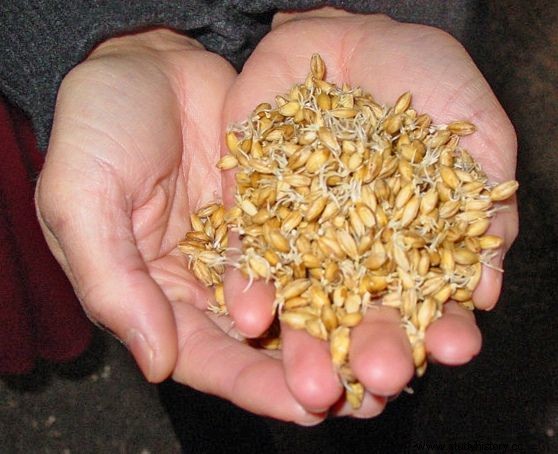Quite recently we wrote about the inhabitants of besieged Leningrad, who in their desperate struggle for their lives did not shy away from cannibalism. Before this happened, however, the city authorities somehow tried to feed hundreds of thousands of starving people. When practically everything was over, the substitutes became truly exotic!
When the siege ring closed around Leningrad on September 8, 1941, the city was completely unprepared. The commissioner from Moscow, who arrived in Moscow, discovered with horror that the grain stored in the warehouses would last only for about 35 days, pasta and groats even for a shorter period of 30 days, meat, both processed and livestock, for about 33 days. and oils and other fats at 45.
The longest, as long as 60 days, was supposed to be enough sugar (the production of sweets was continued almost all this time!). With such low stocks, even the most prudent stewards would not be able to conjure up full rations for the approximately 3.3 million people residing in the city.
As if there weren't enough problems, one of the warehouses, called Badayev's warehouses after its pre-revolutionary owner, went up in smoke. Despite official information that old documents, spare parts and some sugar were burnt there, the townspeople did not get fooled - after all, they smelled the smell of charred ham ...
Our daily bread…
When the bottom was beginning to be visible in the food warehouses, they began to drastically cut food rations and look for substitutes for ordinary food. First, the city was searched long and wide for any forgotten warehouses.
When that didn't do much, in the mills they began to scrape the remains of flour from the gaps in the floor, and to take over the stocks of malt from the breweries, and from the military to feed the horses . The oat-free animals were fed birch twigs soaked in boiling water and sprinkled with salt.

The confiscated malt did not last long.
When these stocks were not enough, people began to reach for increasingly inferior quality additives, which were mixed with the remnants of flour that remained in the city. The divers fished out barges of grain that had sunk as a result of the bombing.
Under normal conditions, their content would be discarded immediately - the overgrown and moldy grains were already starting to germinate. In the face of a disastrous situation, they had to be used. Using this grain raw would lead to poisoning, but when it was dried and baked into bread, the toxins were removed due to the high temperature. By using these substitutes, the city reduced its daily flour consumption by more than half.
In late fall, the substitutes became less and less like normal food. The flax grains used as feed for cattle were now used in a completely different way. They were ground and a slightly greyish pasta was produced.
The so-called "meat mass" smelled for a kilometer and adding cloves to it was useless . And what did this aromatic delicacy consist of? Two thousand tons of sheep gut were found in the docks and in the tannery, calfskins . All together beautifully ground into one aromatic and appetizing slush.
Even less food in eating
At the end of November, the bread had to be pumped more and more, which had little to do with the bread we were used to. In addition to flour, it was baked with pressed cotton pomace, as well as cellulose subjected to the hydrolysis process (man does not have the enzymes needed to digest the common one) that came from pine shavings.

Hundreds of thousands of people died of hunger in besieged Leningrad. One of the starving Leningradians is pictured.
Loafs baked in this way were very heavy, slightly clayey, with a taste of grass, and they had to be baked in large trays. Otherwise they fell apart. Unfortunately, these forms needed to be greased with fat, otherwise the bread could not be removed from them. As Anna Reid, author of the book "Leningrad. The tragedy of the besieged city ”, two tons of oil were used daily in this way.
To save valuable fat, chemists have developed a mixture of water, sunflower oil and so-called "suds", a by-product of cooking oils converted into fuel. The Leningradczyk quoted by the aforementioned author - a certain Pavlov - mentioned that it gave the loaves a slightly orange color, but the losses on quality were completely bearable, and the oil saved went to the canteens .
Perhaps the biggest nasty stuff was the so-called "yeast extract". This substance, like the hydrolysed cellulose added to bread, was another child of the Forestry Academy. This specificity was made from fermented birch sawdust . During production, they were given a solid consistency and formed into large sheets.

The article is based on "Leningrad. The tragedy of the besieged city ”by Anna Reid, which was published by Wydawnictwo Literackie.
Then, the "yeast extract" was sent to company kitchens and employee canteens, where it was further processed. After dissolving in hot water and minimal seasoning it was served as "yeast soup". Of course, this soup of real yeast did not even look at a distance.
From today's perspective, some of these additives seem inedible, even disgusting. But let us remember the extreme desperation which caused the Leningradians in these difficult times. What mattered was not the taste and appetizing appearance, and the fact that the disgusting slush extended life for another several hours and gave little hope for survival. And it was hope that was the last that remained for the inhabitants of the encircled city.
Source:
- Anna Reid, Leningrad. The tragedy of the besieged city , Wydawnictwo Literackie, Krakow 2012.
